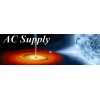Model rockets have a lot of different components that help make a launch successful. The engine is one of the most important components. Understanding all the ins and outs of a model rocket makes the process of building and launching one easier—not to mention more exciting. Check out this brief overview of how model rocket engines work.
The Igniter
The igniter does exactly what you’d expect it to do. In layman’s terms, it helps to ignite the propellant. Hobbyists insert the igniter into the engine, and it holds into place with an igniter plug.
The clips from the launch controller then get clipped onto the wires. When the electricity flows through the igniter, the wire heats up and causes the combustible tip to burst into flames. From this flame, the propellant ignites into the motor.
The Black Powder
Black powder is one of the most common propellants used for model rocket engines. It’s been around since the 50s and hobbyists consider them the traditional option.
They may not look like much because they’re paper tubes with a clay nozzle, but they pack a lot of power. Now, the black powder propellant burns quickly and creates the ultimate thrust that propels the rocket into the sky. You’ll notice that the flame front burns from the rear toward the front end.
The Propellant
Here comes the fun part. Naturally, once the black powder gets consumed, the delayed composition will start to burn. It doesn’t burn as quickly as the propellant, and it doesn’t cause any sort of thrust to the rocket.
Observe the rocket closely. You’ll notice the rocket coasts upward and eventually starts to slow down. The smoke from the blast-off helps you locate the rocket in the sky. Otherwise, you might not see it from the clouds or the sun’s glare.
The Engine’s Final Role
The engine’s work is not done yet. It still plays a role in the ejection and safe landing. Once the burning delayed composition gets consumed, the ejection charge ignites. Next, the fast-burning ejection charge bursts through the clay cap from being over-pressurized.
That burst helps push off the nose cone and eject the parachute for the rocket to have a safe landing. Now that you know all this fascinating information, we know you’re excited to check out our model rocket engines for sale. You may be able to reuse your rocket but not the engine. Here at AC Supply, we have plenty for you to choose from.
Knowing how model rocket engines work is the first step to constructing your first model. For more information, visit our website.


